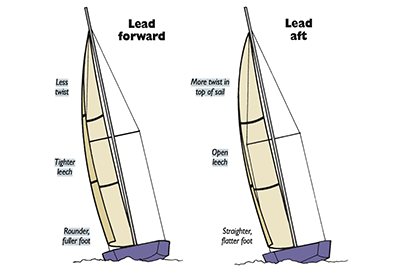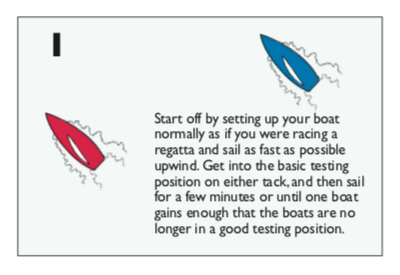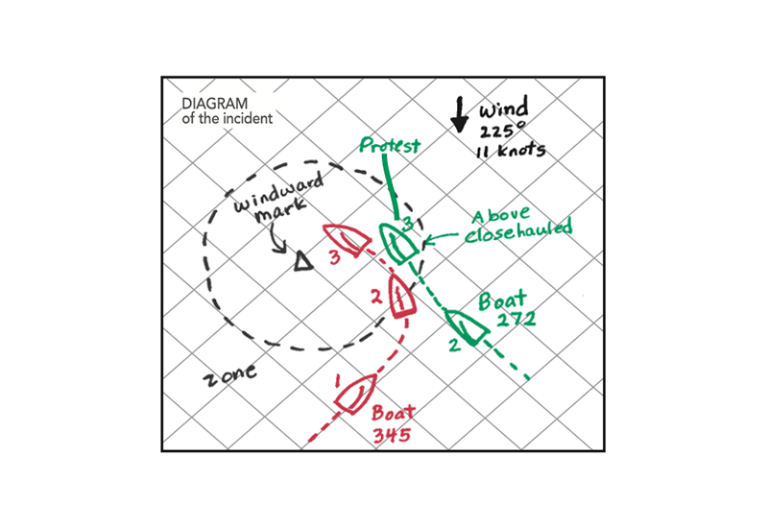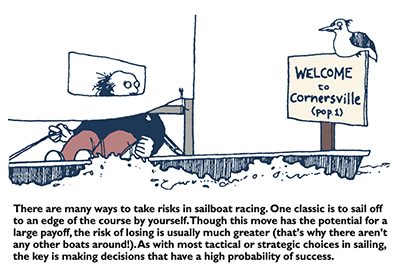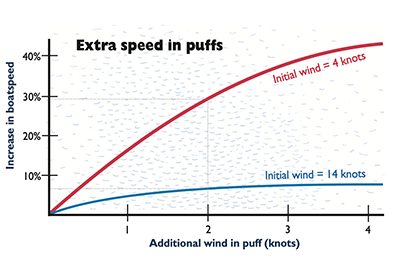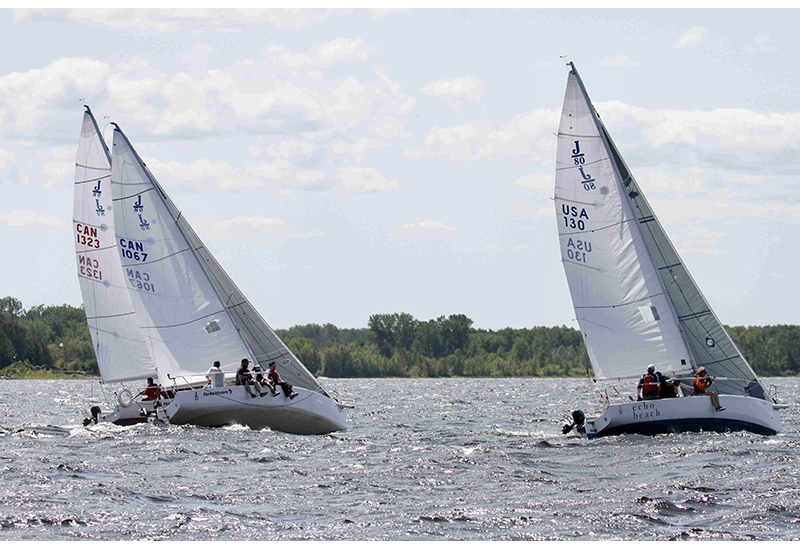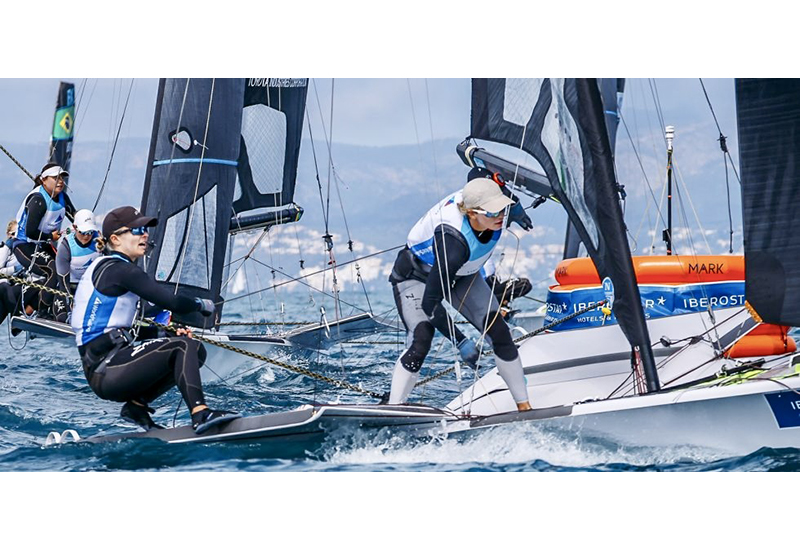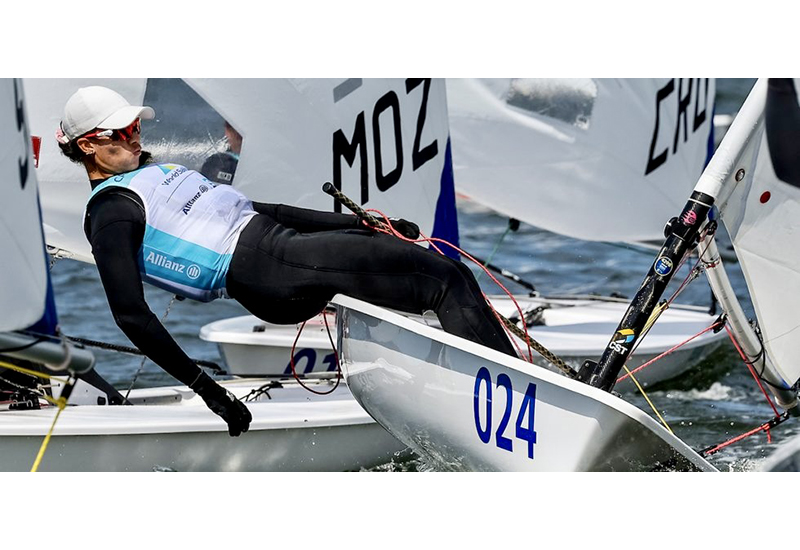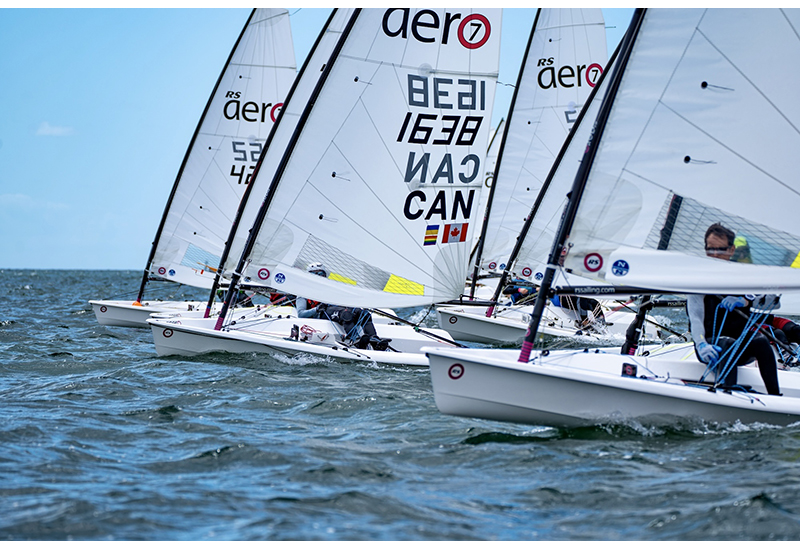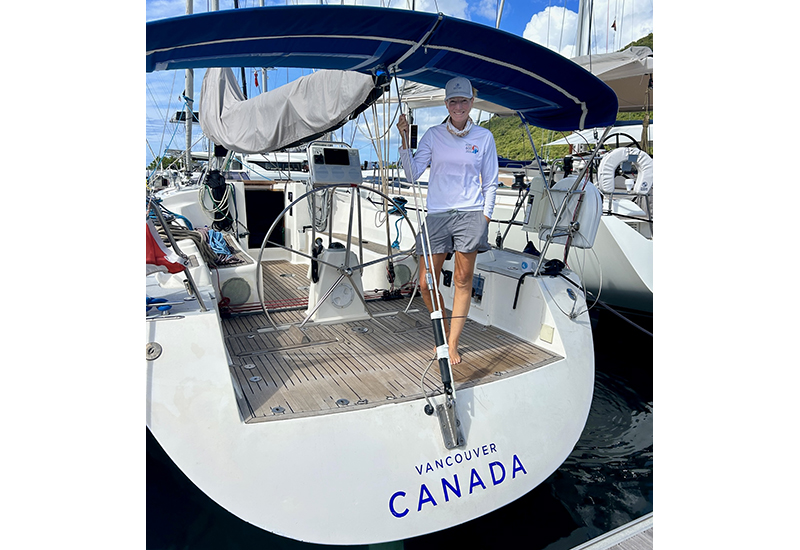Speed & Smarts: The Mechanics of Vanging
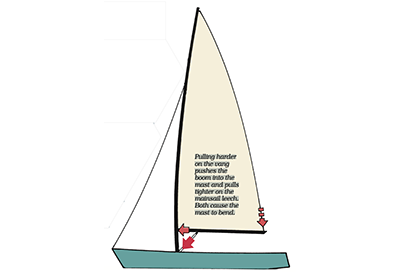
September 6, 2023
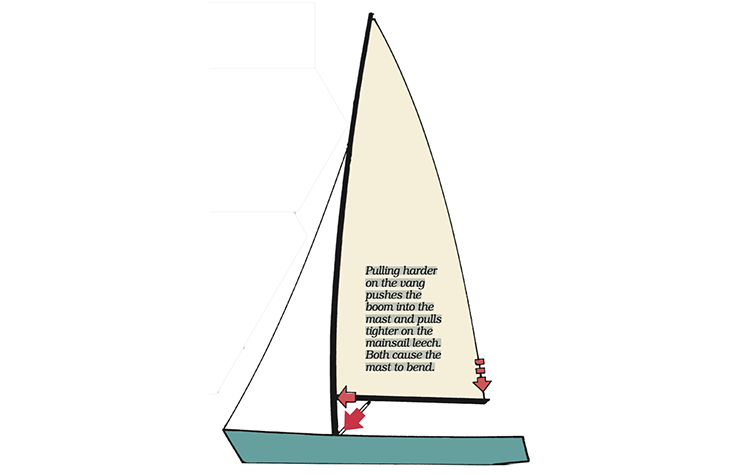
Pulling harder on the vang affects the rig and sails in many different ways, but the exact impact depends a lot on how the boat is rigged. For example, is the boom vang anchored to the mast or to the boat? How far away from the gooseneck does the vang attach (to the boom and mast or boat)? How free is the mast to bend forward in its lower section near the boom?
In general, pulling on the vang does two things. First, it exerts a downward force on the boom, which mostly transfers to the mainsail leech. This force tightens the leech and reduces twist in the sail. It also pulls aft on the tip of the mast, which makes the mast bend more, flattens the mainsail and pulls harder on the headstay, reducing headstay sag.
The second major thing that happens when you pull hard on the vang is that it pushes the boom forward into the mast (at the gooseneck). This bends the bottom part of the mast and flattens the lower part of the sail.
Pulling harder on the vang also might bend the boom (and thereby flatten the sail).
Control twist in the main
The primary job of the boom vang (or ‘kicker’ in some places) is to limit the amount of mainsail twist. The vang does this by pulling down on the boom and straightening the leech, which reduces twist.
Twist is a change (a decrease) in the mainsail’s angle of attack as you go from the bottom to the top of the sail. If you decrease twist, you increase the angle of attack of the sail, especially in the top sections. This adds power and helm.
The vang is a valuable tool in moderate to heavy wind. In light air, you often want more twist in the sail (not less), so putting any tension on the vang would be slow, both upwind and downwind. Once the breeze increases enough that you need more leech tension (for pointing) and a flatter main, start pulling on the vang.
When there is enough wind that you are fully hiked and still need to depower, the vang becomes critical. With a lot of vang tension it’s easier to play the sheet and to change the sail’s angle of attack (which controls power and windward helm). The key thing about using vang is that when you ease the sail to leeward you can maintain leech tension. This is very important for keeping mast bend, a tight forestay, and a flat mainsail.
While the vang reduces twist in the sail, it also has other effects (see above). Tensioning the vang pulls the mast tip aft which bends the mast. It also pushes the boom into the mast causing lower mast bend, and, on some boats, bends the boom. All of these things make the mainsail flatter, which is good when you are overpowered.
It’s easy, however, to have too much vang. How will you recognize this? Upwind you will see a tight leech, often hooking to windward, plus you may get overbend wrinkles running from the lower mast toward the clew. Downwind too much vang makes the top batten angle to windward (beyond parallel to the boom).
Other tips and notes
- Some vangs push up! Beware of spring-loaded vangs that support the weight of the boom. In light air they actually push the boom up, so you may have to pull harder on the vang than you think to get the right amount of leech tension.
- Remove vang slack. Even if the wind is light and you’re not using any vang (because that would make the leech too tight), it often helps to pull the slack out of the line used for the vang system. This gets the vang more out of the way of forward crew members, making it easier for them to cross the boat in tacks.
- Play the vang. Since the wind is always changing, one of the keys to going fast upwind is ‘shifting gears’ (ie constantly adjusting your sail settings to match changes in wind and waves). This applies to the vang just like any other control. If you are using the vang to control leech tension, you have to play the vang for wind velocity – ease it in lulls and pull more tension in puffs.
There are other times when you need to play the vang. When you bear off in breeze (e.g. around the windward mark), ease the vang to release tension on the main leech. If you are sailing on a windy reach, ease when you are overpowered in a puff and pull the vang back on to add power when the puff passes.
- Downwind trim. On reaches and runs the traveler and sheet are used for angle of attack, and the vang controls twist. You typically need less vang downwind than up- wind, so you have to ease it while or after rounding the windward mark.
A good rule of thumb is to set the vang so the top batten is parallel to the boom (just as you would do upwind). You may want more twist than this (a more eased vang) in light air or on boats where the boom can’t go out all the way because of the shrouds (twist allows the top of the sail to rotate so it is more perpendicular to the wind).
You may want less twist than this (a tighter vang) when it’s windy and you are trying to keep the boat under control (a twisted top leech causes the boat to rock side to side).
Should you use ‘vang sheeting’?
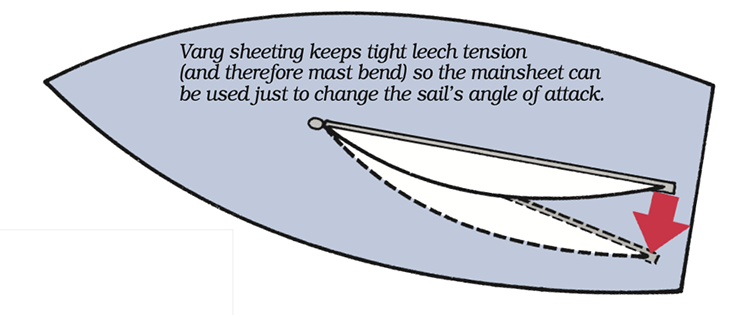
In the normal upwind trimming mode, you use the mainsheet primarily to control twist (the up-and-down movement of the boom) and the traveler to control the sail’s angle of attack (the in-and-out boom movement). The vang does not play a major part in this scenario. There is, however, another trimming style that works effectively on some boats in windy conditions.
‘Vang sheeting’ is a technique that uses a very tight vang upwind in breeze. The vang handles twist (the up-and-down control of the boom previously achieved with the mainsheet), and the mainsheet adjusts the sail’s angle of attack (the in-and-out trim of the boom previously controlled by the traveler).When you ‘vang sheet,’ you tension the vang to get about the right amount of twist in the mainsail; then you play the sheet to keep the boat on its feet and going fast in the puffs and shifts.
Vang sheeting is especially effective on smaller and lighter boats that must use the vang to get enough mast bend and headstay tension. These include boats, such as 470s, that don’t have backstays and/or travelers but do have powerful vangs that are easy to adjust while racing. When it’s windy, these boats need lots of vang tension to keep the headstay straight, the mast bent and the sails flat.
Vang sheeting is also a good idea when you’re on a boat where it’s hard to play the traveler efficiently, or when the puffs are so big that simply dumping the traveler may not depower the boat enough. Having vang tension upwind makes it much easier to play the mainsheet, no matter which trimming technique you use.
 Dave Dellenbaugh is the publisher, editor and author of Speed & Smarts, the racing newsletter. He was the tactician and starting helmsman on America3 during her successful defense of the America’s Cup in 1992 and sailed in three other America’s Cup campaigns from 1986 to 2007. David is also two-time winner of the Canada’s Cup, a Lightning world champion, two-time Congressional Cup winner, seven-time Thistle national champion, three-time Prince of Wales U.S. match racing champion and past winner of the U.S. Team Racing Championship for the Hinman Trophy. He is currently a member of the US Sailing Racing Rules Committee (and was its chairman from 2005-2008).
Dave Dellenbaugh is the publisher, editor and author of Speed & Smarts, the racing newsletter. He was the tactician and starting helmsman on America3 during her successful defense of the America’s Cup in 1992 and sailed in three other America’s Cup campaigns from 1986 to 2007. David is also two-time winner of the Canada’s Cup, a Lightning world champion, two-time Congressional Cup winner, seven-time Thistle national champion, three-time Prince of Wales U.S. match racing champion and past winner of the U.S. Team Racing Championship for the Hinman Trophy. He is currently a member of the US Sailing Racing Rules Committee (and was its chairman from 2005-2008).
You can subscribe to the Speed & Smarts newsletter HERE.

